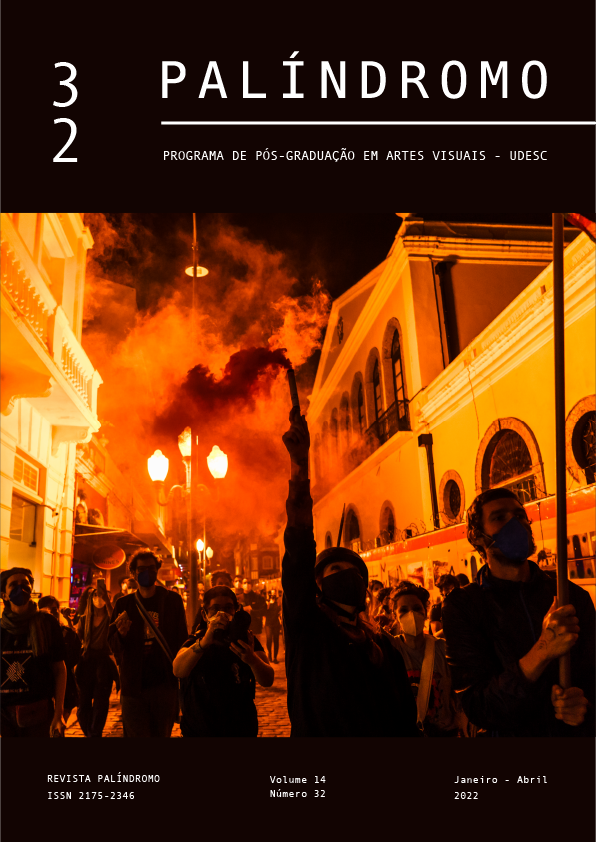Liquid stitching: a story of bonds and infiltrations
DOI:
https://doi.org/10.5965/2175234614322022371Keywords:
Contemporary art, Drawing, Fabulation, Women artists, Subjectivity in ArtAbstract
This work is a visual essay composed of eight drawings from a series named Liquid Stitching, made with ink on paper in the year 2020. The works stem from poetic and conceptual connections with works by female artists and writers that are references for the author, constituting records of fictional encounters. The production of this series was triggered by reflections about the construct of misogyny within the history of western philosophy, and the paths that were taken during the production process led to a poetic approch that involves the concept of liquidity as a creative power and fabulation as a creative procedure for a narrative where the stitching is done through the drawn ink lines.
Downloads
References
ANZALDÚA, Gloria. Falando em línguas: uma carta para as mulheres escritoras do terceiro mundo. Tradução de Édna de Marco. Revista Estudos Feministas. Florianópolis, v. 8, n. 1, p. 229-235, jan 2000. Disponível em: https://periodicos.
ufsc.br/index.php/ref/article/view/9880 Acesso em: 28 jan. 2021.
CRAMPE-CASNABET, Michèle. A mulher no pensamento filosófico do século XVIII. In: DUBY, G.; PERROT, M. (Dirs). História das mulheres no ocidente: do Renascimento a Idade Moderna, v. 3. Porto, Portugal: Afrontamento, 1999.
KURY, Mário da Gama. Dicionário de mitologia grega e romana. 8. ed. Rio de Janeiro: Zahar, 2009.
PIMENTEL, Mariana Rodrigues. Fabulação: a memória do futuro. 2010. Tese (Doutorado em Letras) — Pontifícia Universidade Católica, Rio de Janeiro, 2010.
RANKE-HEINEMANN, Uta. Eunucos pelo reino de Deus: mulheres, sexualidade e a Igreja católica. Rio de Janeiro: Rosa dos Tempos, 1996.
Downloads
Published
How to Cite
Issue
Section
License
Copyright (c) 2021 Luanda de Oliveira Rainho Ribeiro

This work is licensed under a Creative Commons Attribution 4.0 International License.
COPYRIGHT STATEMENT
The articles published by the magazine are free to use, intended for academic and non-commercial applications. Copyright is all assigned to the magazine. The articles whose authors are identified represent the expression from the point of view of their authors and not the official position of Palíndromo Magazine. The author (s) commits to whenever they publish material referring to the article published in Palíndromo mention this publication as follows:
This article was originally published by Palíndromo magazine in its volume (place the volume), number (place the number) in the year of (place the year) and can be accessed at: http://www.revistas.udesc.br/index.php/palindromo


